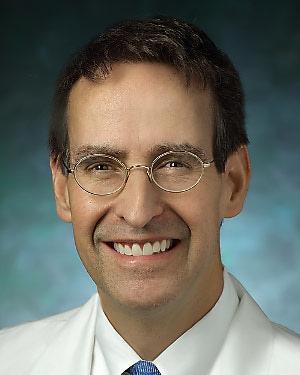Concomitant Tricuspid Repair Could Lower Mortality Risk in Patients with Degenerative Mitral Regurgitation
A recent trial found concomitant tricuspid annuloplasty could lower the risk of mortality and progression to severe tricuspid regurgitation among patients with degenerative mitral valve regurgitation.
James Gammie, MD

Results of a recent trial suggest patients who are undergoing mitral valve surgery for degenerative mitral regurgitation may also benefit from undergoing tricuspid annuloplasty (TA).
The trial, which assessed mitral valve surgery with or without TA, randomized 401 patients and suggests those who received TA had a lower incidence of primary endpoint events than those who underwent mitral valve surgery alone at 2 years, with this reduction primarily driven by less frequent progression to severe tricuspid regurgitation.
“There’s a general agreement among surgeons that if there is severe leakage of the tricuspid valve, then we should fix it,” said lead investigator James Gammie, MD, surgical leader and co-director of the Heart and Vascular Institute at the Johns Hopkins University School of Medicine, in a statement. “However, there has been considerable uncertainty as to whether the tricuspid valve needs repair at the time of mitral valve surgery when the leakage is only moderate or less.”
Although tricuspid regurgitation is common among patients with severe degenerative mitral, contemporary evidence fails to provide clear determination whether to perform tricuspid valve repair during mitral valve surgery in patients with moderate tricuspid regurgitation or less-than-moderate regurgitation with annular dilatation. With this in mind, the current trial was conducted across 39 sites in the United States, Canada, and Germany and designed to assess a composite primary end point of reoperation for tricuspid regurgitation, progression of tricuspid regurgitation by two grades from baseline or the presence of severe tricuspid regurgitation, or death at 2 years.
All patients enrolled in the study were scheduled for mitral valve surgery and those with either moderate tricuspid regurgitation or less-than-moderate regurgitation were randomized in a 1:1 ratio to undergo surgery with or without TA. From 2016-2018, investigators screened more than 5200 patients and 885 patients from this group were considered eligible to participate. Of these, 401 underwent randomization, with 203 randomized to surgery alone and 198 randomized to surgery plus TA.
Among the 401 patients who underwent randomization, mitral valve repair was performed among 89.8% (n=360) and mitral valve replacement was performed in 10.2% (n=41). Among those who underwent TA, the mean annuloplasty ring size was 29.0±1.9 mm among men and 27.8±1.6 mm among women. Investigators noted the mean cardiopulmonary bypass time was 33.5 (95% CI, 20.9-46.1) minutes longer among the TA group than among the surgery-only group (166.1±69.3 vs 132.6±58.8). Additionally, 4 patients crossed over to undergo the other procedure in the operating room and more than half of the patients included in the study underwent concomitant procedures, including CABG, ablation, LAA closure, and oversewing of a PFO.
Secondary outcomes of interest for the study included death, MACCE, pacemaker implantation, length of hospital stay, residual tricuspid regurgitation, and more.
Upon analysis, results indicated those who underwent surgery plus TA experienced fewer primary end point events than their counterparts who underwent surgery alone (3.9% vs 10.2%; relative risk, 0.37 [95% CI, 0.16-0.86]; P=.02). When assessing mortality at 2 years, the observed incidence of mortality was 3.2% among the surgery plus TA group compared to 4.5% for the surgery alone group (RR, 0.69 [95% CI, 0.25-1.88). Further analysis suggested the 2-year prevalence of progression of tricuspid regurgitation was lower among those who received surgery plus TA compared to those receiving surgery alone (0.6% vs 6.1%; RR, 0.09 [95% CI, 0.01-0.69]).
When assessing the frequency of MACCE, functional status, and quality of life, results indicated frequency were similar between the groups at 2 years, but the incidence of permanent pacemaker implantation was greater among the surgery plus TA group than the surgery alone group (14.1% vs 2.5%; rate ratio, 5.75 [95% CI, 2.27-14.60]).
“We clearly need to better understand the risk factors for needing a permanent pacemaker implanted after tricuspid valve repair and how to best mitigate the risk with technique modifications or different postoperative management strategies,” Gammie added. “But for the first time, we have high-level evidence to help us understand what to do in the operating room when it comes to tricuspid valve repair in those with less than severe regurgitation.”
This study, “Concomitant Tricuspid Repair in Patients with Degenerative Mitral Regurgitation,” was published in the New England Journal of Medicine and presented at AHA 2021.